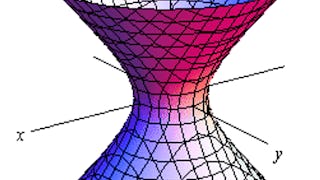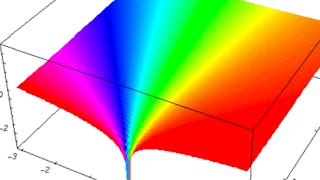Honors Algebra 2: Sequences, Series, Trigonometry, & Probability is the fourth part of a four-part specialization, an engaging, application-focused course that explores how algebra connects to patterns, prediction, and data-driven decision-making. Designed for high school students, college-prep learners, and adult learners refreshing their skills, this course is aligned with the Common Core State Standards and is ideal for independent study through Coursera.



Honors Algebra 2: Series, Trigonometry, and Probability
This course is part of Honors Algebra 2 Specialization

Instructor: Joseph W. Cutrone, PhD
Top Instructor
Access provided by MAHE Manipal
Skills you'll gain
Details to know

Add to your LinkedIn profile
19 assignments
October 2025
See how employees at top companies are mastering in-demand skills

Build your subject-matter expertise
- Learn new concepts from industry experts
- Gain a foundational understanding of a subject or tool
- Develop job-relevant skills with hands-on projects
- Earn a shareable career certificate

There are 4 modules in this course
In this module, we will explore the world of sequences and series—ordered lists of numbers and the sums formed from them. You’ll learn to recognize patterns, write formulas, and make predictions using different types of sequences. We’ll focus on two of the most common: arithmetic sequences, where each term increases or decreases by a constant amount, and geometric sequences, where each term is multiplied by the same factor. We’ll also explore recursive sequences, which define each term based on the ones before it, and see how sequences and series can be used to model real-world situations. These ideas lay the groundwork for more advanced mathematical topics you'll encounter later in algebra and beyond.
What's included
3 videos4 readings5 assignments
In this module, you’ll dive into the geometry of circles and triangles to uncover patterns that shape much of trigonometry. You’ll start by learning how to measure angles in both degrees and radians, and see how they show up in right triangles and around a circle. From there, you’ll explore the unit circle, a simple but powerful tool that connects angles to points on the coordinate plane. Using it, you’ll discover how the values of sine, cosine, and tangent repeat in predictable cycles, and why these patterns are so important. By the end of the module, you’ll not only be able to measure and interpret angles with confidence, but also see how this knowledge sets the stage for understanding the periodic functions that model real-world phenomena like sound waves, seasonal patterns, and circular motion.
What's included
5 videos3 readings4 assignments
Now that you’ve seen how the unit circle connects angles to coordinates, you’re ready to extend these ideas into full trigonometric functions. In this module, you’ll learn how sine, cosine, and tangent can be defined for any real number and understood as functions with their own inputs and outputs. You’ll explore their graphs and see how they repeat in predictable cycles, a property called periodicity. Along the way, you’ll uncover how key features like amplitude, period, and phase shift control the shape of these graphs. Most importantly, you’ll see why trigonometric functions matter: they describe patterns we encounter every day, from the orbit of planets to the changing seasons, the vibration of a guitar string, and even the rhythm of your heartbeat. By the end of the module, you’ll be able to graph these functions, explain their behavior, and recognize how they model repeating patterns in the real world.
What's included
4 videos3 readings4 assignments
In this module, you’ll explore the mathematics of chance and uncertainty, and learn how probability helps us make sense of the unpredictable. You’ll begin by calculating the likelihood of simple and compound events, using logic, data, and counting techniques to reason through problems. From there, you’ll practice using tools like two-way tables and Venn diagrams to uncover relationships between events and determine whether they are independent or dependent. You’ll also be introduced to probability distributions, which connect probability to functions and provide a powerful way to describe real-world situations such as rolling dice, drawing cards, or predicting weather patterns. By the end of the module, you’ll not only be able to compute probabilities with confidence, but also understand how probability supports better decision-making in science, business, and everyday life.
What's included
5 videos7 readings6 assignments
Earn a career certificate
Add this credential to your LinkedIn profile, resume, or CV. Share it on social media and in your performance review.
Instructor

Offered by
Why people choose Coursera for their career




Explore more from Math and Logic

Johns Hopkins University

Johns Hopkins University

Johns Hopkins University

Johns Hopkins University

